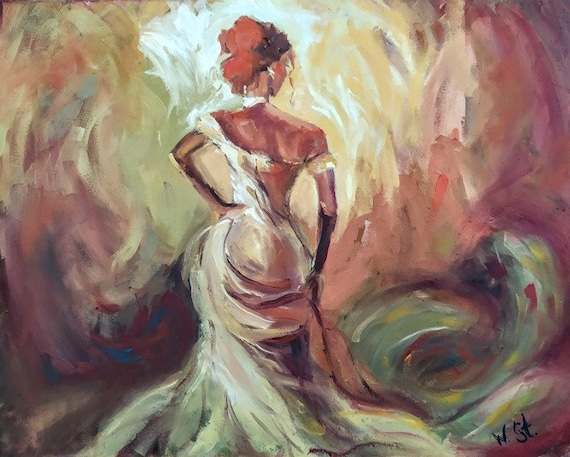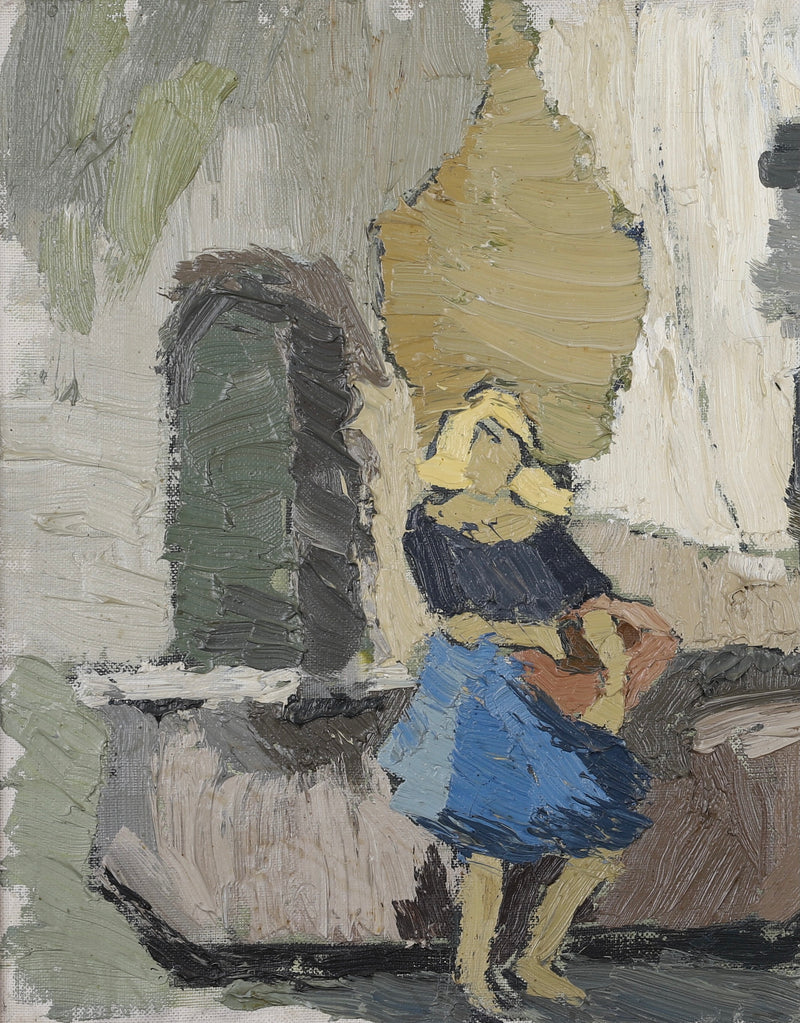Unveiling the Keys Behind Expressive Figurative Oil Painting Styles
Unveiling the Keys Behind Expressive Figurative Oil Painting Styles
Blog Article
The Development of Metaphorical Oil Painting: Comprehending Its Historical Significance and Modern Interpretations
The evolution of figurative oil paint serves as a compelling lens with which to take a look at the interplay in between imaginative expression and historic context. Contemporary musicians, attracting from this rich heritage, are now reinterpreting the human figure in ways that test typical stories.
Beginnings of Metaphorical Oil Painting
The origins of metaphorical oil paint can be traced back to the early Renaissance in Europe, particularly in the 15th century. This duration marked a considerable departure from the flat depictions and stiff forms characteristic of middle ages art. Artists began to discover naturalism, stressing the human figure and its emotional expression. The advancement of oil paint permitted higher depth of color and detail, enhancing the realism and vibrancy of their job.

In this transformative period, figures were typically depicted within contextually abundant environments, showcasing not just their physical qualities however likewise their mental states. Pioneers such as Jan van Eyck and Titian utilized the tool's versatility, employing layering methods to accomplish luminance and structure. This advancement facilitated the portrayal of intricate textiles and the nuances of complexion, adding to the growth of portraiture and narrative scenes.
Additionally, the Renaissance focus on humanism fostered an appreciation for distinctiveness, which subsequently affected artists to create even more relatable and dynamic figures - figurative oil painting. Consequently, figurative oil paint arised as an effective car for narration and emotional interaction, laying the foundation for future creative movements and designs
Secret Historic Movements
Significant historic movements have actually formed the evolution of figurative oil paint, each contributing one-of-a-kind viewpoints and strategies that increased the medium's possibilities. The Renaissance noted a turning point, stressing realistic look and the human kind, with artists like Leonardo da Vinci and Michelangelo pushing the limits of anatomical precision and viewpoint. Following this, the Baroque age brought significant contrasts of light and shadow, exhibited by Caravaggio, that infused religious motifs with extreme emotionality.
The 19th century introduced Romanticism and Realistic look, where artists such as Delacroix and Courbet challenged classical ideals, focusing on private expression and everyday life. The advent of Impressionism further revolutionized the tool by stressing the effects of light and shade, leading to a departure from conventional representation.
In the very early 20th century, activities like Expressionism and Cubism redefined figurative paint with abstraction and the exploration of emotional deepness. Each of these activities not just reflected the social changes of their times however likewise prepared for modern analyses. The interaction between these historic motions has produced a rich tapestry of styles and philosophies, affecting modern-day musicians in their pursuit of catching the human experience on canvas.
Methods and Materials Evolution

Throughout the Baroque duration, techniques such as chiaroscuro and sfumato arised, improving the psychological resonance of figurative structures. Musicians started to explore glazes and impasto, adjusting texture and luminosity. By the 19th century, innovations like see this page the usage of pre-mixed paints in tubes reinvented availability, allowing artists to repaint en plein air and catch the short lived impacts of light.
The 20th century experienced the intro of synthetic pigments and mediums, which broadened the combination and altered the uniformity of oil paints. Additionally, the expedition of brand-new application strategies, such as palette blades and brushes of differing stiffness, additional diversified imaginative expression. Jointly, these innovations reflect the developing relationship between products, techniques, and the imaginative vision inherent in figurative oil paint.

Contemporary Analyses
Contemporary interpretations of figurative oil paint show a dynamic dialogue in between custom and advancement, where artists challenge developed norms and explore diverse motifs. This development materializes in various ways, as contemporary artists mix classic techniques with modern-day concepts, commonly resolving social, political, and personal narratives.
Lots of practitioners attract ideas from historical jobs, yet they infuse their pieces with contemporary viewpoints, Clicking Here using the human kind as a vehicle for commentary on identification, culture, and gender. Artists increasingly trying out abstraction, distortion, and blended media, which permits a broader interpretation of the number and its context.
Furthermore, using vivid shade schemes and non-traditional structures frequently offers to interfere with typical seeing experiences, provoking vital engagement from target markets. This change in focus expands beyond appearances; it reflects a growing awareness of the intricacies of human experience in an interconnected globe.
As figurative oil paint remains to evolve, it stays an important medium for exploring the nuances of modern life, personifying both a respect for heritage and a commitment to dynamic thought. The result is a rich tapestry of expression that reverberates with the complexities of the modern-day human problem.
Influence On Modern Art
The influence of figurative oil paint on modern art is extensive, as it has actually continually motivated a myriad of creative motions and practices throughout the 21st and 20th article centuries. From Expressionism to Surrealism and past, the exploration of the human number has remained a central motif, permitting musicians to communicate intricate feelings and narratives. This emphasis on figurative depiction has brought about a re-examination of conventional methods, leading to ingenious strategies that mix realism with abstraction.
Moreover, modern artists have actually accepted metaphorical oil painting as a way to deal with social and political issues, making use of the tool to challenge perceptions of gender, identity, and society. The rebirth of rate of interest in metaphorical operate in current years reflects a yearning for link in a progressively digital globe, where human experience and feeling are vital.
In addition, the dialogue in between metaphorical oil paint and modern art appears in the works of musicians such as Kehinde Wiley and Jenny Saville, who make use of historic references while instilling their pieces with modern importance. Inevitably, figurative oil painting proceeds to shape and redefine modern-day artistic expression, underscoring its long-lasting significance in the art globe.
Final Thought
The development of metaphorical oil painting highlights its historical significance and adaptability throughout various imaginative movements. Inevitably, figurative oil painting continues to be a vital medium for checking out the human experience, reverberating exceptionally in today's electronic landscape.
The advancement of metaphorical oil paint offers as an engaging lens with which to check out the interaction in between artistic expression and historic context.Considerable historical movements have actually shaped the development of metaphorical oil painting, each contributing one-of-a-kind philosophies and strategies that expanded the medium's opportunities.As historic activities shaped the trajectory of metaphorical oil paint, the techniques and products used by musicians have also undertaken substantial improvements. figurative oil painting.The effect of metaphorical oil paint on modern art is profound, as it has constantly inspired a myriad of imaginative movements and techniques throughout the 21st and 20th centuries.The evolution of metaphorical oil paint underscores its historical relevance and flexibility throughout numerous creative motions
Report this page